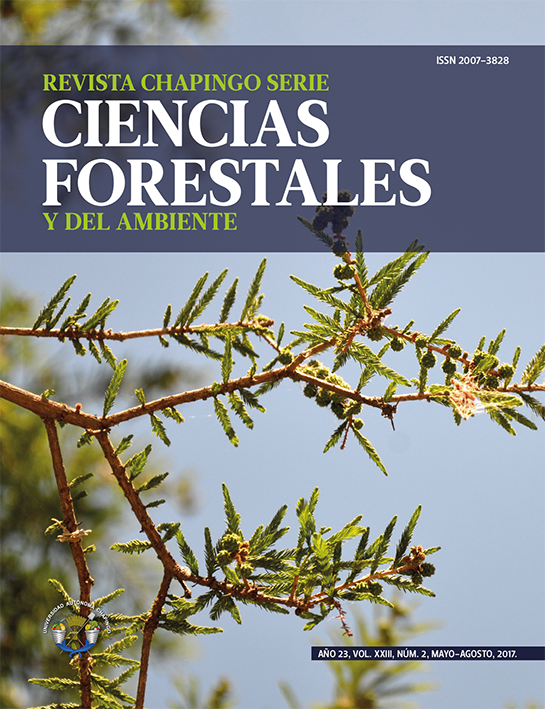##article.highlights##
- Se compararon los intervalos de la media de la disposición a pagar (DAP) de los métodos paramétrico y no paramétrico.
- No se observaron diferencias en los valores estimados de la media de la DAP entre ambos métodos.
- Se recomienda el uso de los métodos no paramétricos como complemento del método paramétrico.
- Dentro de los métodos no paramétricos, no se observaron diferencias en la media estimada.
Resumen
Introducción: La valoración contingente (MVC) es el método directo más significativo para calcular el valor monetario total de los servicios ecosistémicos.
Objetivos: Los métodos paramétrico y no paramétrico de estimación de la disposición a pagar (DAP) se compararon a través de intervalos de la media, para dar recomendaciones de uso en la valoración de servicios ecosistémicos.
Materiales y métodos: Para proveer soporte a la comparación de los métodos se utilizaron dos casos de estudio que aplicaron el MVC. Dentro del enfoque no paramétrico, los intervalos de la media y varianza obtenidos con las fórmulas de Boman, Bostedt y Kriström se compararon con los obtenidos por el método de Haab y McConnell.
Resultados y discusión: Los métodos paramétrico y no paramétrico se pueden utilizar indistintamente para obtener la media de la DAP, debido a que no existieron diferencias significativas entre los valores estimados. En los métodos no paramétricos, los dos enfoques analizados no difieren en la estimación de la media, pero sí existen diferencias al momento de calcular las varianzas; el método de Haab y McConnell genera varianzas de la media relativamente más grandes.
Conclusiones: Se recomienda utilizar el método no paramétrico como complemento o validación de los resultados del método paramétrico, dado que este último incluye variables socioeconómicas explicatorias de la DAP.
Citas
Abdullah, S., & Jeanty, P. W. (2011). Willingness to pay for renewable energy: Evidence from a contingent valuation survey in Kenya. Renewable and Sustainable Reviews, 15(6), 2974–2986. doi: https://doi.org/10.1016/j.rser.2011.03.016
Ayer, M., Brunk, H. D., Ewing, G. M., Reid, W. T., & Silverman, E. (1955). An empirical distribution function for sampling with incomplete information. Annals of Mathematical Statistics, 26(4), 641−647. http://www.jstor.org/stable/2236377
Azqueta, O. D. (1994). Valoración económica de la calidad ambiental (1a ed.). Madrid, España: Ed. McGraw-Hill.
Boman, M., Bostedt, G., & Kriström, B. (1999). Obtaining welfare bounds in discrete-response valuation studies: A non-parametric approach. Land Economics, 75(2), 284−294. doi: https://doi.org/10.2307/3147011
Cerda, U. A., & Vásquez, L. F. (2005). Differences between parametric and non-parametric estimation of welfare measures: An application to the río Claro, Talca, Chile. Panorama Socioeconómico, 23(31), 22−31. http://www.redalyc.org/articulo.oa?id=39903103
De Groot, R. S., Wilson, M. A., & Boumans, R. M. J. (2002). A typology for the classification, description and valuation of ecosystem functions, goods and services. Ecological Economics, 41(3), 393–408. doi: https://doi.org/10.1016/S0921-8009(02)00089-7
Del Saz, S. S., & García, M. L. (2007). Estimating the non-market benefits of an urban park: Does proximity matter? Land Use Policy, 24(1), 296–305. doi: https://doi.org/10.1016/j.landusepol.2005.05.011
Haab, T. C., & McConnell, K. E. (2002). Valuing environmental and natural resources. Cheltenham, UK: Edward Elgar Publishing.
Hanemann, W. M., & Kanninen, B. (1999). The statistical analysis of discrete-response CV Data. In I. J. Bateman, & K. G. Willis (Eds.), Valuing environmental preferences: Theory and practice of the contingent valuation method in the USA, EC, and developing countries (pp. 302–441). New York, USA: Oxford University Press.
Jeanty, P. W. (2008). WTPCIKR: Stata module to estimate Krinsky and Robb confidence intervals for mean and median willingness to pay. USA: Statistical Software Components, Boston College Department of Economics. http://ideas.repec.org/c/boc/bocode/s456965.html
Krinsky, I., & Robb, A. L. (1986). On approximating the statistical properties of elasticities. Review of Economic and Statistics, 68, 715−719. doi: https://doi.org/10.2307/1924536
Mogas, J., & Riera, P. (2003). Validación del experimento de elección en la transferencia de beneficios. Hacienda Pública Española/Revista de Economía Pública, 165(2), 79−95. http://www.ief.es/documentos/recursos/publicaciones/revistas/hac_pub/165_Validacion.pdf
Perman, R., Ma, Y., McGilvray, J., & Common, M. (2003). Natural resource and environmental economics (3a ed.). United Kingdom: Pearson Education Limited.
Riera, P., Brey, R., & Gándara, G. (2008). Diseño de pagos para aproximaciones no paramétricas en valoración contingente con formato dicotómico simple. Hacienda Pública Española/Revista de Economía Pública, 186(3), 43−60. http://www.ief.es/documentos/recursos/publicaciones/revistas/hac_pub/186_DisenoPagos.pdf
Sánchez, J. (2008). Disponibilidad a pagar por la conservación del bosque amazónico por parte de usuarios indirectos. Revista economía y administración, 71, 59−84. http://www2.udec.cl/~rea/REVISTA%20PDF/Rev71/art3.pdf
Soncco, M. C., & Armas, B. A. (2008). Aproximación paramétrica y no paramétrica para la estimación de la disposición a pagar por servicios ambientales. Anales científicos, 69(3), 87–94. http://www.revistascientificasunalm.org/index.php/cientificos/article/view/219
StataCorp LLC. (2015). Stata. Data analysis and statistical software. USA: Author.
Tallis, H., & Polasky, S. (2009). Mapping and valuing ecosystem services as an approach for conservation and natural resource management. Annals of the New York Academy of Sciences, 1162, 265−283. doi: https://doi.org/10.1111/j.1749-6632.2009.04152.x
Valdivia, A. R., García, A. E., López, S. M. A., Hernández, O. J., & Rojano, A. A. (2011). Valoración económica por la rehabilitación del río Axtla, S. L. P. Revista Chapingo Serie Ciencias Forestales y del Ambiente, 17(3), 333−342. doi: https://doi.org/10.5154/r.rchscfa.2010.07.045
Valdivia, A. R., Abelino, T. G., López, S. M. A., & Zavala, P. M. J. (2012). Valoración económica del reciclaje de desechos urbanos. Revista Chapingo Serie Ciencias Forestales y del Ambiente, 17(3), 435−447. doi: https://doi.org/10.5154/r.rchscfa.2010.07.044
Vaughan, W. J., & Rodríguez, D. J. (2000). A note on obtaining welfare bounds in referendum contingent valuation studies. https://publications.iadb.org/handle/11319/4748
Villena, M. G., & Lafuente, E. (2013). Valoración económica de bienes ambientales por beneficiarios circundantes y no circundantes. Cuadernos de Economía, 32(59), 67−102. http://www.redalyc.org/articulo.oa?id=282126853005

Esta obra está bajo una licencia internacional Creative Commons Atribución-NoComercial 4.0.
Derechos de autor 2017 Revista Chapingo Serie Ciencias Forestales y del Ambiente



